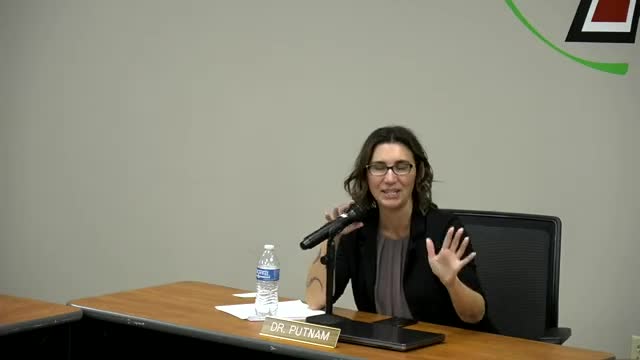Minnesota schools tackle lead contamination in water sources
October 03, 2024 | St. Cloud Public School District, School Boards, Minnesota
This article was created by AI summarizing key points discussed. AI makes mistakes, so for full details and context, please refer to the video of the full meeting. Please report any errors so we can fix them. Report an error »

During a recent government meeting, officials discussed the implementation of new state requirements aimed at enhancing educational practices and ensuring safe water in schools. The meeting highlighted the complexities of adhering to these mandates, particularly the Minnesota Multi-Tiered System of Supports (MTSS), which aims to improve collaboration between district and site-level operations.
Participants acknowledged the challenges posed by the administrative obligations associated with the MTSS framework, emphasizing the need for clear communication among educators and families. The discussions revealed that a recent survey conducted among district leadership teams was intended to assess the alignment of educational strategies and identify potential communication gaps between district and site-level perspectives.
Superintendent Putnam noted that the initiative aligns with the district's strategic plan, which focuses on continuous improvement in educational experiences for students. The goal is to refine existing practices to better meet student needs, despite the additional workload that may arise from these new requirements.
In a separate update, Joel Heitkamp, the executive director of operations, provided an overview of the Minnesota Safe Water Plan. This plan mandates testing of all water sources in schools every five years, with the latest tests conducted in 2023. Heitkamp reported that out of 772 water sources tested, 19 exceeded the previous lead threshold of 20 parts per billion. Following mitigation efforts, only five sources remained above the threshold, leading to the capping of unnecessary fixtures.
Significantly, the state legislature has recently lowered the acceptable lead threshold to 5 parts per billion, prompting the district to proactively address water sources that fall within this new range. Heitkamp assured that the district is committed to mitigating these issues ahead of the next testing cycle in 2028, aiming to ensure safe drinking water for all students.
The meeting underscored the district's dedication to improving educational outcomes and maintaining safe environments for students, despite the challenges posed by new regulations and the complexities of implementation.
Participants acknowledged the challenges posed by the administrative obligations associated with the MTSS framework, emphasizing the need for clear communication among educators and families. The discussions revealed that a recent survey conducted among district leadership teams was intended to assess the alignment of educational strategies and identify potential communication gaps between district and site-level perspectives.
Superintendent Putnam noted that the initiative aligns with the district's strategic plan, which focuses on continuous improvement in educational experiences for students. The goal is to refine existing practices to better meet student needs, despite the additional workload that may arise from these new requirements.
In a separate update, Joel Heitkamp, the executive director of operations, provided an overview of the Minnesota Safe Water Plan. This plan mandates testing of all water sources in schools every five years, with the latest tests conducted in 2023. Heitkamp reported that out of 772 water sources tested, 19 exceeded the previous lead threshold of 20 parts per billion. Following mitigation efforts, only five sources remained above the threshold, leading to the capping of unnecessary fixtures.
Significantly, the state legislature has recently lowered the acceptable lead threshold to 5 parts per billion, prompting the district to proactively address water sources that fall within this new range. Heitkamp assured that the district is committed to mitigating these issues ahead of the next testing cycle in 2028, aiming to ensure safe drinking water for all students.
The meeting underscored the district's dedication to improving educational outcomes and maintaining safe environments for students, despite the challenges posed by new regulations and the complexities of implementation.
View full meeting
This article is based on a recent meeting—watch the full video and explore the complete transcript for deeper insights into the discussion.
View full meeting
